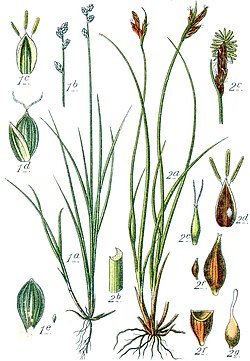| Carex loliacea | |
|---|---|
 | |
 | |
| Scientific classification | |
| Kingdom: | Plantae |
| Clade: | Tracheophytes |
| Clade: | Angiosperms |
| Clade: | Monocots |
| Clade: | Commelinids |
| Order: | Poales |
| Family: | Cyperaceae |
| Genus: | Carex |
| Species: | C. loliacea |
| Binomial name | |
| Carex loliacea | |
| Synonyms | |
Carex loliacea (common name, ryegrass sedge) is a species of flowering plant in the family Cyperaceae. [1]
